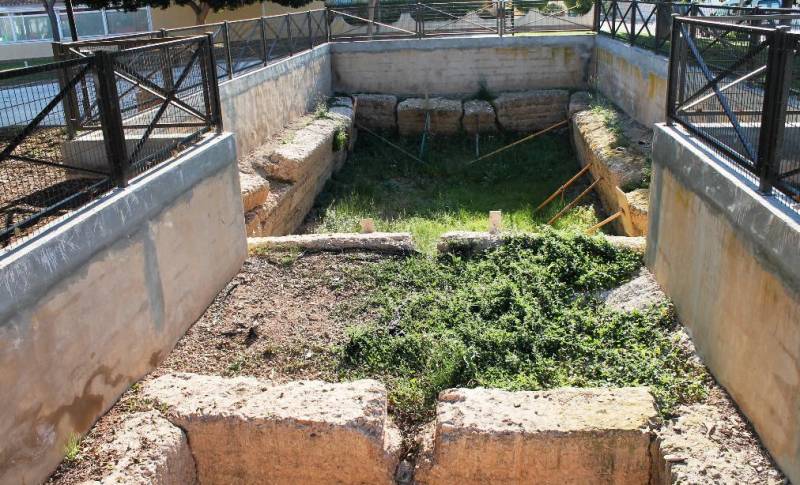- Region
- Águilas
- Alhama de Murcia
- Jumilla
- Lorca
- Los Alcázares
- Mazarrón
- San Javier
-
ALL AREAS & TOWNS
- AREAS
- SOUTH WEST
- MAR MENOR
- MURCIA CITY & CENTRAL
- NORTH & NORTH WEST
- TOWNS
- Abanilla
- Abarán
- Aguilas
- Alamillo
- Alcantarilla
- Aledo
- Alhama de Murcia
- Archena
- Balsicas
- Blanca
- Bolnuevo
- Bullas
- Cañadas del Romero
- Cabo de Palos
- Calasparra
- Camping Bolnuevo
- Campo De Ricote
- Camposol
- Canada De La Lena
- Caravaca de la Cruz
- Cartagena
- Cehegin
- Ceuti
- Cieza
- Condado de Alhama
- Corvera
- Costa Cálida
- Cuevas De Almanzora
- Cuevas de Reyllo
- El Carmoli
- El Mojon
- El Molino (Puerto Lumbreras)
- El Pareton / Cantareros
- El Raso
- El Valle Golf Resort
- Fortuna
- Fuente Alamo
- Hacienda del Alamo Golf Resort
- Hacienda Riquelme Golf Resort
- Isla Plana
- Islas Menores & Mar de Cristal
- Jumilla
- La Azohia
- La Charca
- La Manga Club
- La Manga del Mar Menor
- La Pinilla
- La Puebla
- La Torre
- La Torre Golf Resort
- La Unión
- Las Palas
- Las Ramblas
- Las Ramblas Golf
- Las Torres de Cotillas
- Leiva
- Librilla
- Lo Pagan
- Lo Santiago
- Lorca
- Lorquí
- Los Alcázares
- Los Balcones
- Los Belones
- Los Canovas
- Los Nietos
- Los Perez (Tallante)
- Los Urrutias
- Los Ventorrillos
- Mar De Cristal
- Mar Menor
- Mar Menor Golf Resort
- Mazarrón
- Mazarrón Country Club
- Molina de Segura
- Moratalla
- Mula
- Murcia City
- Murcia Property
- Pareton
- Peraleja Golf Resort
- Perin
- Pilar de la Horadada
- Pinar de Campoverde
- Pinoso
- Playa Honda
- Playa Honda / Playa Paraíso
- Pliego
- Portmán
- Pozo Estrecho
- Puerto de Mazarrón
- Puerto Lumbreras
- Puntas De Calnegre
- Region of Murcia
- Ricote
- Roda Golf Resort
- Roldan
- Roldan and Lo Ferro
- San Javier
- San Pedro del Pinatar
- Santiago de la Ribera
- Sierra Espuña
- Sucina
- Tallante
- Terrazas de la Torre Golf Resort
- Torre Pacheco
- Totana
- What's On Weekly Bulletin
- Yecla


- EDITIONS:
 Spanish News Today
Spanish News Today
 Alicante Today
Alicante Today
 Andalucia Today
Andalucia Today
The Roman water deposits of Los Diegos in Los Alcazares
The 2000-year-old ruins in Los Narejos were used for unknown purposes!
 Very little is known about the function and purpose of these Roman remains in the Los Narejos district of Los Alcázares other than the fact that they were built between the 2nd century BC and the 3rd century AD.
Very little is known about the function and purpose of these Roman remains in the Los Narejos district of Los Alcázares other than the fact that they were built between the 2nd century BC and the 3rd century AD.
There is no certainty over whether they formed part of a larger complex of constructions, but they may have been related to the water supply infrastructures serving a Roman villa or agricultural concern, possibly for the treatment of esparto grass prior to weaving or for treating clay for pottery, or for creating salted fish products… no evidence has been found to resolve the mystery.
What is known is that the walls are made out of “opus caementicium” cement, containing small pebbles and ceramic fragments, and lined with “opus signinum”. This is one of the facts which helps to date the remains mainly to the later period of the Roman Republic, most likely the 3rd century AD. Examination of the composition of the cement shows the remains of many small marine creatures endemic to the Mar Menor, suggesting that the water was collected from the nearby beach.
The structure unearthed as recently as 1990 during excavation work measures 7.45 by 13.70 metres and only two of the pools are interconnected.
The structures can be seen in Avenida Radio Baliza Óscar in Los Narejos (click here for map).
For more local information contact the tourist offices in Los Alcázares or go to the home page of Los Alcázares Today.




